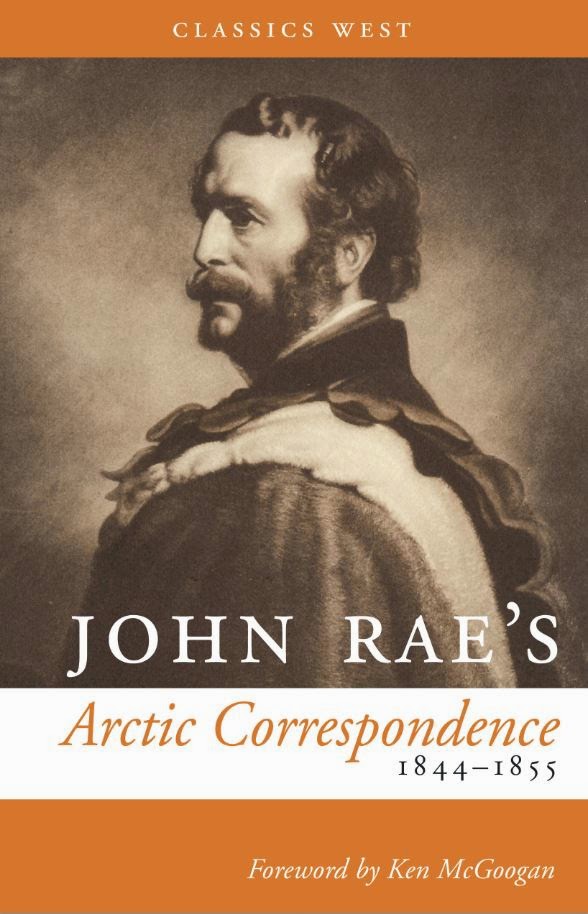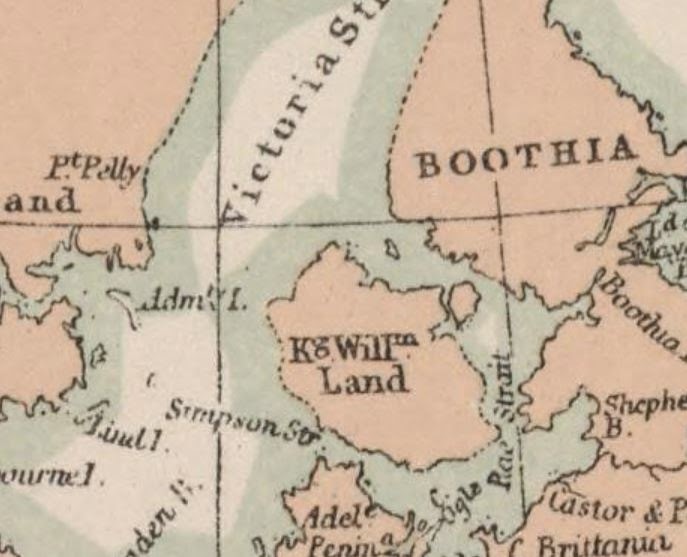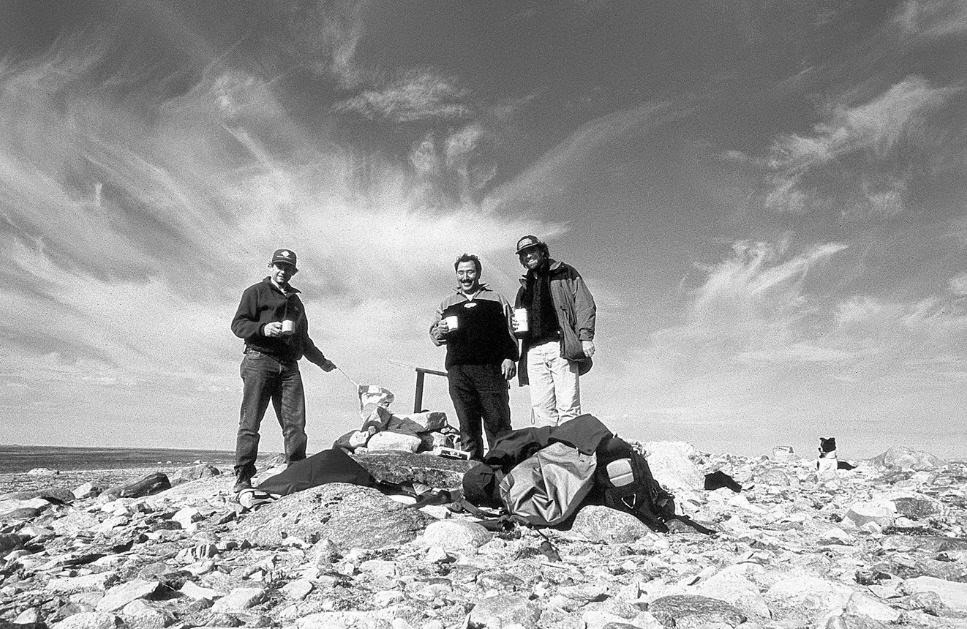John Rae enters Westminster Abbey, redeems Sir John Franklin
With
a Canadian search expedition scouring the Northwest
Passage for the Erebus and the Terror, several Arctic historians have turned their backs on Sir John
Franklin’s claim to fame. By insisting that “a substantial section” of the
Passage remained undiscovered well into the 1850s, these would-be guardians of exploration
orthodoxy repudiate Franklin’s claim to discovery of the Passage, which derives
from his voyage of 1846.
That
was when, with the two ships mentioned above, Sir John sailed south from Parry
Channel to the northwest corner of King William Island. There he got trapped in
the heavy ice, and there Canadian ships are now searching. The
repudiation of Franklin arises out of a last-ditch attempt to prevent
Westminster Abbey from recognizing the Scottish-Orcadian explorer John Rae for discovering the final link in the Passage.
Thanks
to a years-long campaign led by Alistair Carmichael, member of parliament for
Orkney and Shetland, a memorial to Rae will be dedicated at Westminster Abbey
on September 30th. As the author of a book about Rae (Fatal Passage), I will attend that ceremony and say a few words.
The
nay-saying historians point to a stretch of Arctic coastline that remained unmapped
for years after Franklin and Rae did their work. But a stretch of coastline
cannot, by definition, provide a navigable link in a Passage. The argument is a
red herring.
In
contrast, Orkney-based historians introduced a significant clarification last
September, when they erected a new statue of Rae in Stromness. There, they
recognized that he discovered “the final link in the first navigable Northwest Passage.”
That clarification
brings us to Roald Amundsen, universally recognized as the first explorer to navigate
or sail through the Passage. In his book about his voyage of 1903-06, Amundsen
explicitly credits Rae with having shown him where to sail. “His work was of
incalculable value to the Gjoa
expedition,” Amundsen writes. “He discovered Rae Strait which separates King
William Land from the mainland. In all probability through this strait is the
only navigable route for the voyage round the north coast of America. This is
the only passage which is free from destructive pack ice.”
In
Westminster Abbey, etched in stone, we find Franklin hailed for “completing the
discovery of the Northwest Passage.” The guardians of orthodoxy have now joined
me in rejecting this formulation. In Lady
Franklin’s Revenge, I show where it came from.
Over the
past dozen years, when addressing this issue, I have sometimes declared that Franklin
discovered nothing. But that is going too far. In 1846, Franklin made a major
contribution by sailing south down Peel Strait from Parry Channel to the
northwest corner of King William Island.
Now, I
reject the corollary — that his men “forged the last link with their lives” —
because those ill-fated sailors slogged south along a coastline where no navigable
Passage existed. No ship would transit through Victoria Strait until 1967, more
than a century later, when an icebreaker finally passed that way. Even today, as
I write, Canadian searchers are battling sea ice in that area.
But again:
Franklin did sail south to King William Island. Of that accomplishment, we have
tangible proof — and more evidence may soon be found. Franklin established a
navigable Northwest Passage all the way south to where he got trapped in the
ice.
Who cares
about an uncharted stretch of coastline that he sailed past? Certainly not John
Rae, who built on the work of Franklin (and of James Clark Ross, who had visited
the area). In 1854, eight years after Franklin got trapped off King William
Island, while travelling over ice and snow less than 200 km away, Rae gleaned
from Inuit hunters not only how the Franklin expedition had ended, but what it
had achieved.
On that
same outing, Rae discovered a strait linking the north-south channel
established by Franklin (and Ross) with the coastal channel previously delineated
by several explorers, notably Thomas Simpson of the Hudson’s Bay Company. That
short waterway, Rae Strait, was the final link in the Passage, the one Amundsen
would use on his historic voyage.
Rae built
a cairn to mark his discovery. In 1999, with two fellow adventurers, I went
north and placed a plaque beside the remains of that cairn — a homage to Rae
and his two companions, an Inuk and an Ojibway. I tell that story in the
epilogue to Fatal Passage.
Getting
John Rae recognized in Westminster Abbey stands as a significant development. On
September 30, the Dean of Westminster will dedicate a ledger stone that reads, “John
Rae, Arctic explorer.”
Certainly,
the Stromness formulation is superior. Even so, kudos to the Dean, and hats off
to Alistair Carmichael and his fellow Orcadians, for having the courage,
resolve, and political muscle to make this dedication happen. Hats off to Sir John
Franklin, who established the second-last link in the Northwest Passage. And hats
off, finally, and above all, to explorer John Rae, who recognized what Franklin
had achieved, and built on his work in discovering the final link in the first
navigable Northwest Passage.
[Arrowsmith
map published 1857: http://www.davidrumsey.com/
]
Photo taken (using a timer) on Boothia Peninsula at the site of the cairn that John Rae built in 1854. The water in the background is Rae Strait.



Nice post Ken. I assume that picture is you at Victory Point?
Heard on news this evening about the discovery of one of Franklin's ships, and showed the two artefacts discovered as well, talking as if these are the only ones discovered since Franklin went missing.No mention of Rae and his tireless work, and of the artefacts he bought from the native people. Glad to hear that he is finally getting recognition at least in Westminster Abbey. pjm
Have been listening to the current news of discovery of one of Franklin's ships … and wondering when someone would come forward with the story of John Rae, who charted so much of the Arctic coastline and brought news back to London of the exact location being searched today. Rae's information was gleaned from Innuit who sold to Rae, artifacts retrieved from the Franklin Expeditions remains.
London establishment preferred to believe that those savages must have killed Franklin and his men !!
Struan Robertson
Good news that John Rae is finally being recognized by the British Parliament. Regrettable, though, that the Canadian government and media, including CBC, who crowed obsessively about the discovery of one of Franklin's ships, didn't do us the service of recognizing the true discovery of the remaining section of the northwest passage. The last paragraph in your introduction to your 2011 edition of John Rae's Journal and Autobiography expresses precisely my sentiments regarding the relative merits of Sir John Franklin and Dr. John Rae. The truest Canadian story is about the knowledge brought to non-aboriginal Canadians, in particular, by those, unlike Franklin and other British Navy explorers, who were adaptable enough to use Inuit knowledge and technology to achieve effective travel and living in Arctic environments.
Thanks to you for placing a plague recognizing Rae's contributions; but even better if the Canadian government would do the same.